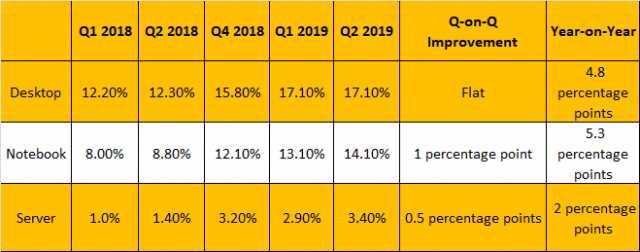Very solid results on the back of Ryzen and Navi sales. AMD paid back a ton of debt which means they are really confident in cash flow going forward. Free cash flow for AMD means more R&D, more competition and better products for us. Whoop!
https://www.anandtech.com/show/15445/amds-fy2019-financial-report
https://www.anandtech.com/show/15445/amds-fy2019-financial-report
Today AMD announced its 4Q 2019 revenue of $2.13 billion, up 18% from the previous quarter and up 50% from the same quarter last year. This is accompanied by a 45% gross margin for Q4, AMD's highest on record, up from 38% from Q4 last year and up from 43% in Q3. Operating income for the quarter was up a staggering 1143% (not a typo) from $28 million a year ago to $348 million this quarter, and net income was up 347% to $170 million. The resulted in earnings per share of $0.15, up 275% from a year ago.
Within Q4, AMD paid down a lot of debt - down from $1087m in 3Q19 to $563m in 4Q19, which would lead to suggestions that AMD could pay off its debt by the start of 3Q20. This also corresponds with a positive free cash flow, increasing from $1209m in 3Q to $1503m in 4Q.
![[H]ard|Forum](/styles/hardforum/xenforo/logo_dark.png)
